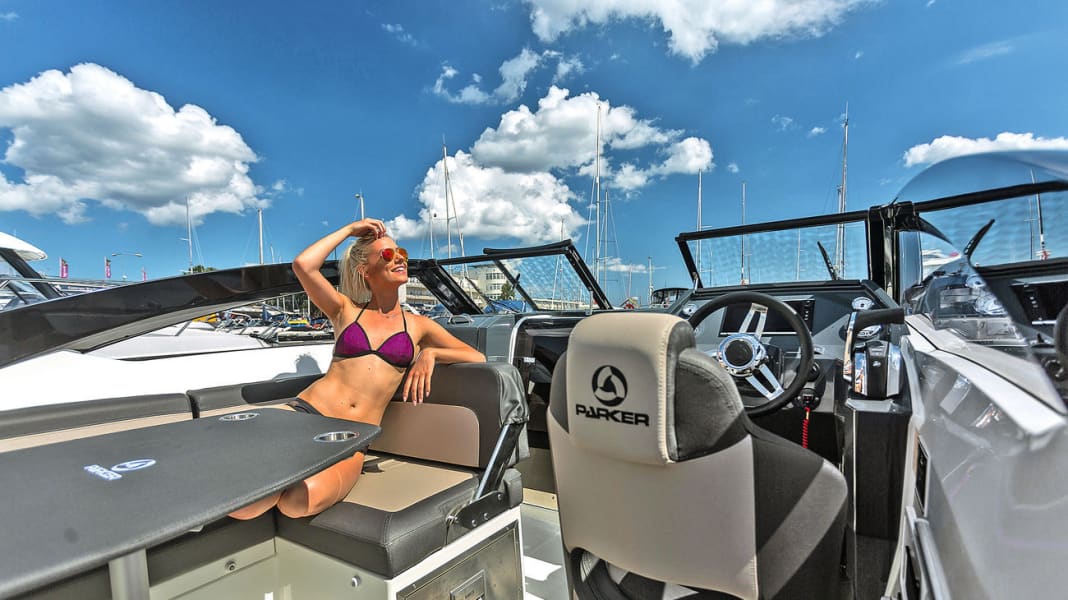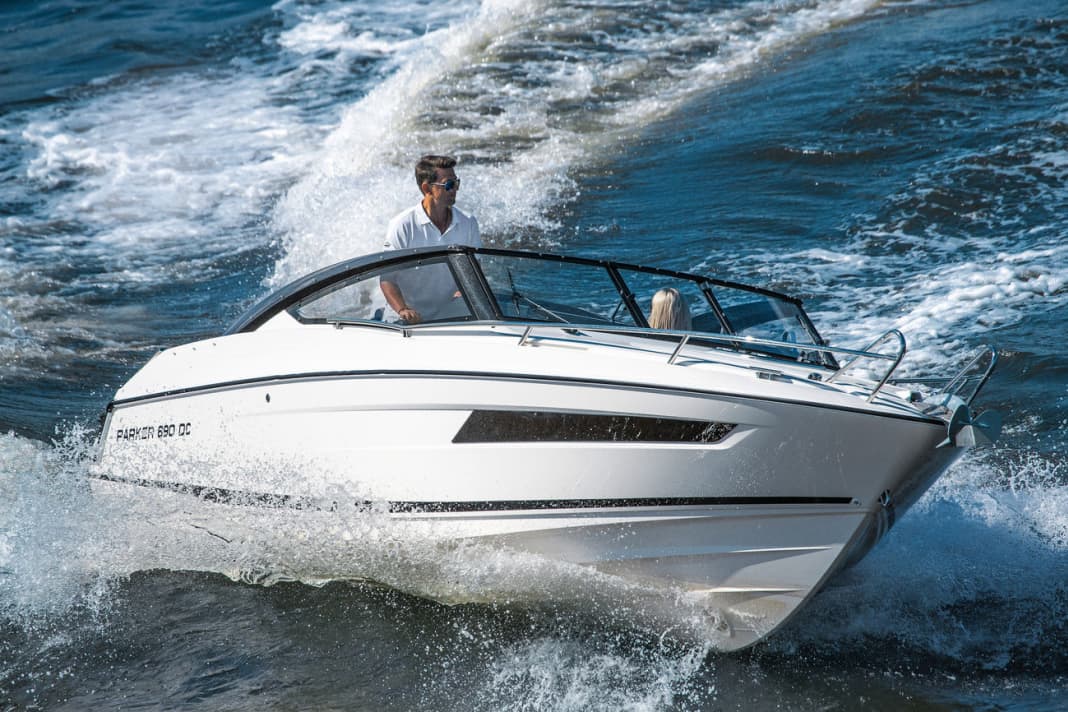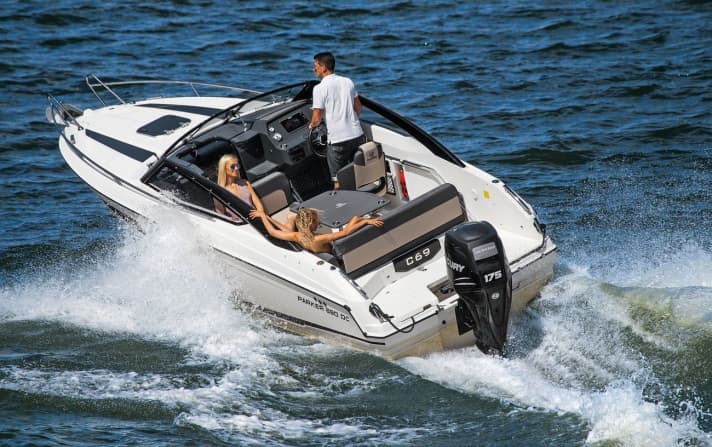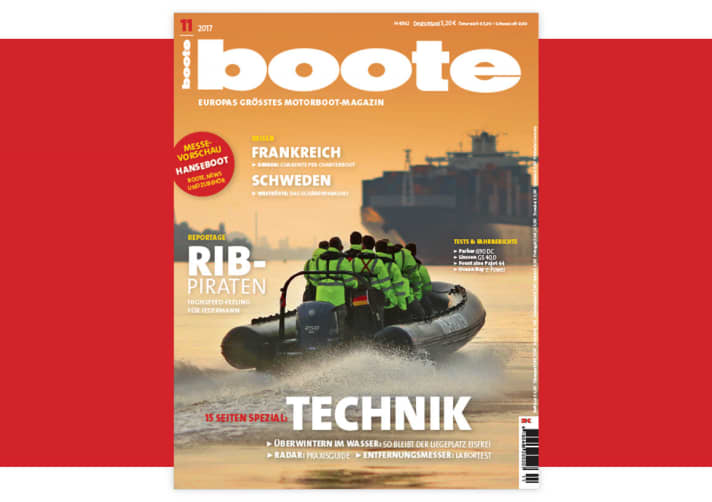
"This boat looks very familiar to me," is my first thought when I step onto our test boat. And as it turns out later, I have already driven a similar type in Scandinavia. Onlythe manufacturer was called Askeladden.






The solution to the riddle: Askeladden and Parker come fromone and the same shipyard and are therefore identical. The boats are called Askeladden when they are inScandinavia sold and Parker inWestern Europe.
The fact that at the timegood workmanshipThe reason why the Polish shipyard, like the current test boat, was so impressed is that well-known Scandinavian shipyards also have their boats produced at the Polish shipyard. And from theirQuality requirements benefits Parker.
They areone and the same craftsmenwho laminate and assemble all the boats, as a visit to the shipyard impressively demonstrates. Parker is currently buildingnine models in a wide range of variations, from the 6.30 m longBowrider up to the 11 m longCabin boat or 10-metreInflatable boat with a fixed hull. In between, our 6.45 m long Parker 690 Day Cruiser test boat, which is good for engines from 115 hp to 250 hp.
We sail the boat in the Bay of Gdansk off Gdynia, and the propulsion is provided by aVerado 175 from Mercurywhose tuning for the boat is not commonplace. According to the customer's specifications, the engine hangs extremely high on the transom and the propeller was selected so that the engine does not exceed 5800 rpm.
This means that it revs in the lower full throttle range, which is between 5800 and 6400 rpm. However, this has no influence on the good workmanship, with which our test boattop in all areas cuts off. Trailer captains need a towing vehicle that can take at least two tonnes on the hook.
Driving and manoeuvring
A precise electric gearstick and hydraulic steering make manoeuvring easier, but with just over five turns from one side to the other, this means more work for the rudder hand. However, as our test boat manoeuvres forwards and backwards at slow speed, there is no need for a lot of fiddling.
If someone changes their position in the boat during both slow and fast displacement sailing, this has little effect on the course and heel. At these speeds, full circles measure just two boat lengths, which extend to around 50 metres in diameter when planing.
With good foresight and moderate trim, the 690 DC goes from displacement to planing speed from around 3000 rpm or 11 knots. With a fully developed power trim, the propeller then slows down to 5800 rpm and allows a top speed of just under 39 knots on the choppy water after a long run-up.

After analysing our measurement results, the test boat can theoretically travel 245 nm at a speed of 17 kn or 3500 rpm on one tank of fuel, plus 15% reserve. At full throttle, you should look for a bunker station after about 110 nm and at slow speed (6 kn) after 255 nm, plus reserves.
This more than fulfils the range target in all speed ranges. The acoustics are acceptable, with our sound pressure level meter only exceeding the 85 dB/A limit from 5500 rpm.
During the test sequences, manoeuvring in fast planing or the extreme manoeuvres, the tuning of the engine is noticeable and prevents a tight turn with optimum trim due to the propeller ventilating very early.
With the engine fully trimmed, the stainless steel propeller reaches into the void a little later. We complete the 180° turns in one go if you crank the rudder fast enough. The hull does not catch and there is no great rocking.
On the imaginary slalom course, we get the 690 DC to swing safely over the longitudinal axis and when the rudder is torn, it goes where it should. Somewhat rougher water with more waves at the end of the test is enough to confirm the hull's positive characteristics here too.
In other words: Parker 690 DC plus Verado 175 are an ideal package for everyone, even beginners.
While the skipper sits safely and comfortably in an adjustable bucket seat, the co-driver sits on the front section of the cockpit L-shaped bench seat. If the co-driver wants to look forwards, he can fold the back section aft. A grab handle on the cockpit wall provides support, which we otherwise miss somewhat in the boat. The controls for the driver are mounted appropriately, and the owner decides how the dashboard is equipped.
Technology and safety
The outboard motor hangs neatly bolted to the transom and is connected to the boat by an empty pipe through which all the connecting cables run. If you want to access the technology in the boat, you first have to fold up the canopy linkage under the rear bench seat so that you can reach everything under the floor flap.
These include the batteries, main fuse, shut-off valves for the cockpit's outboard self-draining system, as well as the fuel tank and fuel tap with external filter, without water alarm. The manual bilge pump is also located in the same area.
The 230 V unit is easier to access as it is located under the seat cushion of the port bench seat. The main switch and the thermal fuses can be reached and operated quickly behind a flap in the driver's footwell.
Good and safe handling characteristics and the outboard self-draining cockpit score points. The fact that there is only one handrail on the foredeck is part of the design. The plastic teak decking (extra) proves to be practical.
Living, cockpit and equipment
The dimensions of the forward cabin promise a sleeping space for two, the only moderate headroom is due to the design. If you put the cross in the right place, you can get a sea toilet including a faeces tank with suction pump for the cabin for an extra charge.

There is also a camper top for outside and a lot more, such as a 230 V shore power connection with charger or a windscreen wiper for the co-driver. You can also order the antifouling paint including epoxy primer ex works and, what makes sense, electronic navigation devices from Raymarine or Garmin.
You enter the boat either from the stern via the integrated bathing platforms or the foredeck with folding windscreen centre section and accessible companionway. Neither an echo sounder nor a compass are standard, but a windscreen wiper is. The dealer can supply certified navigation lighting at no extra charge on request.
Minus-plus: A canopy is not included as standard, but the tarpaulin is. Four mooring cleats serve as mooring lines, and the wide railing is suitable for fenders, but not as a spring.
A self-draining bow anchor locker with bow fitting and bathing ladder (which, incidentally, can be easily operated from the foredeck) are standard. The same applies to the rubbing strake, although we would like it to be one size wider and more bulbous.
Conclusion
Parker 690 DC plus Verado 175 are a harmonious package, as the handling characteristics prove. The workmanship is of the highest standard and the space in the cockpit is impressive. The equipment level is quite low, but the "package" is still easy to trailer.
This test comes from BOOTE 11/2017.


